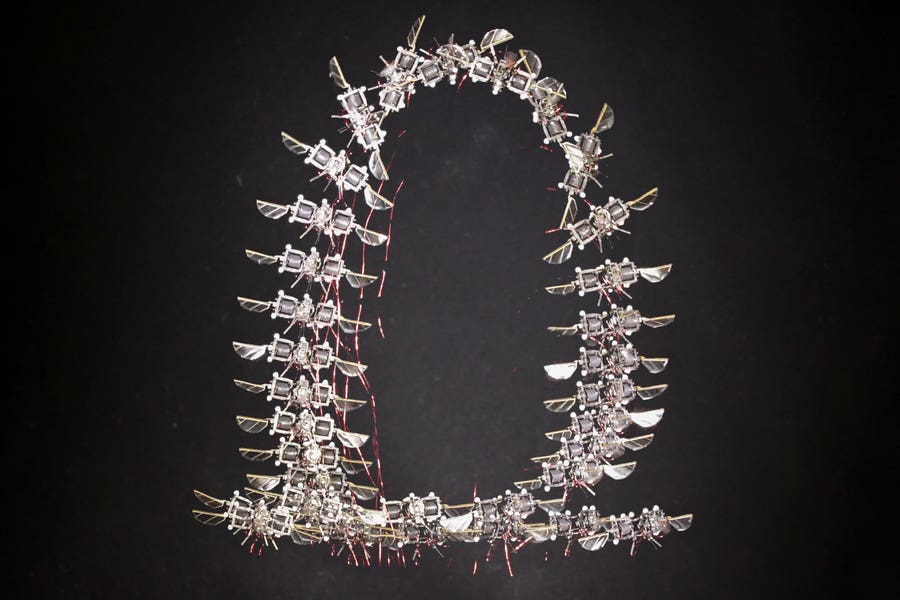Irrational meets the radical: Mathematician solves one of algebra’s oldest problems
For centuries, one of algebra’s oldest puzzles has remained unsolved—how to find exact answers for higher-degree polynomials, where the variable is raised to the fifth power or more. Mathematicians have…

Prof. Norman Wildberger says the new polynomial method has both theoretical and practical applications. (CREDIT: Elva Darnell, UNSW)
For centuries, one of algebra’s oldest puzzles has remained unsolved—how to find exact answers for higher-degree polynomials, where the variable is raised to the fifth power or more. Mathematicians have long believed that a general solution for these equations in terms of square or cube roots, known as radicals, was impossible.
That belief dates back to 1832, when French mathematician Évariste Galois showed that solving polynomials of degree five or higher could not be done using a standard formula involving radicals.
But recent work by a mathematician from the University of New South Wales has reopened this once-closed chapter in math history. In a paper written with computer scientist Dr. Dean Rubine, UNSW Honorary Professor Norman Wildberger reveals a bold new method to solve higher-order polynomials.
Instead of relying on irrational numbers and radical expressions, their approach uses patterns hidden in polygon shapes and number sequences called hyper-Catalan numbers.
As Prof. Wildberger explains, “Our solution reopens a previously closed book in mathematics history.”
Rethinking Radicals in Algebra
To understand this breakthrough, it helps to know why solving polynomials became such a challenge. Solutions to basic equations, such as quadratics like 1 + 4x - 3x² = 0, go back to ancient Babylon. Those early mathematicians could solve these problems by finding two numbers that add to one value and multiply to another. That same idea led to the modern quadratic formula.
In the 1500s, European mathematicians extended these ideas to cubic and quartic equations using formulas involving cube roots and other radicals. But no such formula worked for quintics, the name given to fifth-degree polynomials.
The reason lies in the properties of radicals. These are often irrational numbers—decimals that go on forever without repeating. For example, the cube root of 7 is about 1.9129…, and it never ends or forms a clean pattern. According to Prof. Wildberger, using these numbers assumes you can handle infinite data, which he sees as unrealistic.
Related Stories
“You would need an infinite amount of work and a hard drive larger than the universe,” he says. That’s why he doesn’t believe irrational numbers are truly valid objects in math.
This view led him to reject traditional methods using radicals and instead develop tools like rational trigonometry and universal hyperbolic geometry. His newest method for solving polynomials is based on a similar idea—replacing radicals with infinite but orderly number sequences known as power series.
From Triangles to Higher Polygons
The key to Wildberger and Rubine’s method lies in a well-known mathematical sequence called the Catalan numbers. These count how many ways a polygon—a shape with straight sides—can be split into triangles without the lines crossing. This has important uses in computer science, game theory, and biology, where it helps model how RNA molecules fold.
But these numbers aren’t just useful—they’re mathematical gold. They also show up in the solution to a quadratic equation. Wildberger’s insight was that to solve polynomials of higher degrees, you need higher-dimensional versions of these sequences.
Using hyper-Catalan numbers, which count ways to divide polygons into more complex shapes—like quadrilaterals and pentagons—his team found a path forward. These patterns can be written as a special kind of power series involving multiple variables. One such formula looks like this:
0 = 1 − α + t₂·α² + t₃·α³ + t₄·α⁴ + t₅·α⁵ + …
This equation has a power series solution for α, expressed using terms built from factorials and variables t₂, t₃, and so on. Although this may seem complex, it gives mathematicians a universal tool: a single formula that can be adjusted to solve any polynomial of any degree.
This approach moves away from looking for exact radical answers and instead provides an ongoing summation process. While infinite, these sums can be cut off after enough terms to give an accurate approximation, much like decimal expansions.
Testing the Series with Classic Equations
The team tested this method on a famous cubic equation from the 1600s that John Wallis used to demonstrate Newton's method. Their solution worked well. By truncating the power series, they could calculate close approximations of the roots—without using any irrational numbers.
The idea of solving equations with power series isn’t entirely new. In 1844, Gotthold Eisenstein used a similar method for a fifth-degree polynomial that couldn’t be solved with radicals. His series, known as the Bring radical, was an early sign that power series could hold the key to higher-degree equations.
But Wildberger and Rubine’s work goes further. They don’t just offer a solution for one special case. They’ve developed a general formula that works across all degrees. The trick lies in their use of combinatorics—the study of how elements in a set can be arranged or grouped.
By linking the geometric patterns of subdivided polygons to the structure of polynomial equations, they created a bridge between geometry and algebra.
The Rise of the Geode
At the heart of their discovery is a mysterious new array of numbers they call the “Geode.” This structure appears to underlie not only the Catalan numbers but also their higher-dimensional cousins. It plays a central role in organizing and expressing the solutions to polynomial equations through power series.
The Geode is built from a layering of the hyper-Catalan series by the number of polygon faces involved. This layering results in a unique factorization of the series, revealing deep and unexpected order in what seemed like a random collection of values.
“It’s a fundamentally new array of numbers,” Prof. Wildberger says. “We expect the study of this new Geode array will raise many new questions and keep combinatorialists busy for years.”
Indeed, the connections between the Geode and sequences listed in the Online Encyclopedia of Integer Sequences (OEIS) suggest that there may be even more hidden patterns waiting to be discovered.
Practical Potential for Computing
Though this research may seem abstract, the results could reshape how computers handle complex equations. Because these series-based solutions don’t rely on radicals or irrational numbers, they can be better suited for computation. This could make many existing algorithms faster and more accurate.
Prof. Wildberger sees great promise in applying this method to real-world problems. "This is a core computation for much of applied mathematics,” he explains. “It’s an opportunity for improving algorithms across a wide range of areas.”
The impact could stretch from engineering and physics to software and data science, where polynomial equations often appear.
As the method gains attention, more researchers may build on this foundation, testing the Geode and hyper-Catalan structures in other fields. For now, the work invites mathematicians to rethink the rules of algebra and consider whether one of math’s longest-standing puzzles might finally have a new solution.
Research findings are available online in the journal The American Mathematical Monthly.
Note: The article above provided above by The Brighter Side of News.
Like these kind of feel good stories? Get The Brighter Side of News' newsletter.



